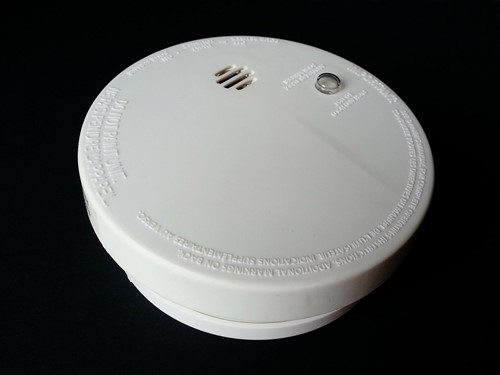
Carbon monoxide leaks are an emergency situation. Gas stoves, dryers, furnaces, wood-burning fireplaces and other gas or flame-ignited appliances are all potential sources of carbon monoxide leaks. Carbon monoxide poisoning causes headaches, nausea and other symptoms, which can turn into a life-threatening emergency with continued exposure to this gas. But don't fret.
Carbon monoxide detectors can provide you with an immediate alert when a leak is detected, allowing you and your household to get to safety outside as soon as possible. Keep the following tips in mind when placing carbon monoxide detectors for the best protection possible.
Place detectors at the right level
Carbon monoxide detectors work best when you place them roughly five feet above floors. Putting them too low might cause them to be less effective at detecting carbon monoxide leaks, since carbon monoxide is lighter than air. You can put carbon monoxide detectors on ceilings if you don't have a good spot to put them on the wall.
Keep detectors away from flame sources
Putting carbon monoxide detectors too close to flame sources could cause them to go off when there is no carbon monoxide leak. Keep these detectors away from fireplaces and any flame-producing appliances, such as gas stoves.
Place detectors in safe areas
Carbon monoxide detectors should be kept out of the reach of kids and pets, so they don't play with them or accidentally set them off by pressing buttons. Keeping detectors out of reach also protects them from damage.
Install a detector on every floor
Each floor in your home should have at least one carbon monoxide detector, which helps ensure, no matter where a leak is occurring, the nearest carbon monoxide detector will detect it and alert you and your household.
Place a detector near sleeping areas
Carbon monoxide leaks can occur during the night when you and your household are sound asleep. Having a carbon monoxide detector near sleeping areas in your home helps ensure you and yours will wake up via the alert in the middle of the night, so you can get to safety.
Test detectors regularly
Check your carbon monoxide detectors regularly, such as once a week, to make sure they're working. Replace the batteries in these detectors every year to keep them working properly.
About the Author

John Hassler
Our goal is overcoming the housing challenge and getting to know one another, here is a bit about me. Providing you with professional guidance for buying and selling homes stems from an in-depth knowledge of the Twin Cities Best Homes and Neighborhoods. For us, the process is a simple one and starts with a conversation about your needs, desires and concerns. No contracts or promises up front. I ask only for the opportunity to understand your housing needs and have you become comfortable with my real estate knowledge and experience. I have lived throughout the metro area, have sold close to 1000 homes as well as built, remodeled and designed homes. My passion is assisting you in discovering that perfect home, location and setting that will bring you and your family pleasure and comfort for years to come. I would enjoy the opportunity to meet with you at your home, business or over a cup of coffee. I am readily available by email, text and enjoy a phone call as well. Please don’t hesitate to contact me, as I always enjoy a new opportunity to help someone!
